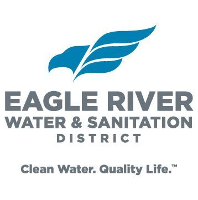Global rules on foreign direct investment: EU| Publications | Knowledge | Global law firm – Norton Rose Fulbright

Report on European Union Foreign Direct Investment Screening and Sustainable Development Goals
Introduction to the EU FDI Regulatory Framework
The European Union’s framework for screening Foreign Direct Investment (FDI) is governed by Regulation 2019/452 (the Current FDI Regulation). A new legislative proposal, expected for adoption in 2026 (the Proposed Regulation), aims to strengthen this framework. A primary objective of the Proposed Regulation is to mandate that all EU Member States implement FDI screening mechanisms, thereby harmonizing security protocols across the Union. This initiative directly supports Sustainable Development Goal 16 (Peace, Justice, and Strong Institutions) by ensuring the development of effective, accountable, and transparent institutions at the national and EU levels to protect public order and security.
Cooperation Mechanism and Institutional Roles
The EU framework establishes a cooperative system rather than a centralized, EU-level screening authority. While the host Member State retains final authority on FDI approval, it is obligated to give “due consideration” to opinions from the European Commission (EC) and other Member States. For investments designated as being of “Union interest,” the host state must take “utmost account” of the EC’s opinion. This collaborative structure is a practical application of SDG 17 (Partnerships for the Goals), fostering multi-stakeholder partnerships to achieve shared security and sustainable economic objectives.
Scope and Procedural Safeguards
The Current FDI Regulation applies to investments from non-EU investors intended to establish lasting links and enable effective participation in the management or control of an EU company. The Proposed Regulation will broaden this scope to include EU-based investors that are controlled by non-EU entities. To ensure a predictable and fair investment climate, which is foundational for SDG 8 (Decent Work and Economic Growth), national screening mechanisms must adhere to several principles:
- Transparency and non-discrimination between third countries.
- Clearly defined circumstances, grounds, and procedural rules for screening.
- Establishment of timeframes for screening decisions.
- Protection of confidential information.
- Availability of judicial redress against screening decisions.
Alignment with Sustainable Development Goals (SDGs)
The FDI screening framework is intrinsically linked to the advancement of numerous Sustainable Development Goals by safeguarding sectors critical to societal well-being and sustainable development. The uniform screening areas identified in the regulation protect assets and industries essential for achieving the 2030 Agenda.
- Critical Infrastructure: Screening investments in energy, transport, water, and health infrastructure directly supports SDG 7 (Affordable and Clean Energy), SDG 9 (Industry, Innovation, and Infrastructure), SDG 6 (Clean Water and Sanitation), and SDG 3 (Good Health and Well-being).
- Critical Technologies: The focus on sectors like artificial intelligence, robotics, semiconductors, and biotechnologies is vital for fostering innovation and building resilient infrastructure, aligning with SDG 9.
- Supply of Critical Inputs: Protecting the supply of energy, raw materials, and ensuring food security contributes to SDG 7, SDG 12 (Responsible Consumption and Production), and SDG 2 (Zero Hunger).
- Sensitive Information and Media: Safeguarding access to sensitive data and ensuring media pluralism are crucial for protecting democratic processes and strong institutions, a core tenet of SDG 16.
Statistical Overview and Future Outlook
According to the EC’s fifth annual report, 24 Member States had active FDI screening mechanisms by the end of 2024. In 2024, 477 notifications were submitted under the cooperation mechanism. Of the cases where a decision was reported, 86% were approved without conditions, 9% were approved with mitigating measures, and 1% were blocked. The Proposed Regulation’s mandate for universal adoption of screening mechanisms is expected to enhance harmonization and lead to a more effective, joined-up approach to protecting the Union’s strategic interests. This will create a more stable and secure investment environment, further contributing to the long-term objectives of SDG 8 and SDG 16.
Analysis of Sustainable Development Goals (SDGs) in the Article
1. Which SDGs are addressed or connected to the issues highlighted in the article?
-
SDG 9: Industry, Innovation, and Infrastructure
The article directly connects to this goal by focusing on the protection of “critical infrastructure” and “critical technologies.” The EU’s FDI screening regulation explicitly lists sectors such as energy, transport, water, communications, AI, robotics, semiconductors, and cybersecurity as areas of concern, which are central to building resilient infrastructure and fostering innovation.
-
SDG 16: Peace, Justice, and Strong Institutions
This goal is central to the article, which describes the creation and strengthening of an institutional framework (the FDI screening mechanism) at both the EU and national levels. The text details the development of regulations, transparent procedural rules, judicial redress, and cooperation between Member States and the European Commission, all of which are key components of building effective, accountable, and inclusive institutions.
-
SDG 17: Partnerships for the Goals
The article highlights the importance of partnership and cooperation. It describes the “cooperation mechanism” where Member States and the European Commission share information and views on foreign investments. The Proposed Regulation aims to make this cooperation “more effective and efficient” and lead to a “more joined-up approach,” which embodies the spirit of enhancing policy coherence and strengthening partnerships for sustainable development.
2. What specific targets under those SDGs can be identified based on the article’s content?
-
Target 9.1: Develop quality, reliable, sustainable and resilient infrastructure, including regional and transborder infrastructure, to support economic development and human well-being, with a focus on affordable and equitable access for all.
The article identifies this target by detailing the screening of investments in “critical infrastructure (including energy, transport, water, health, communications…)” and “critical technologies.” The purpose of the screening mechanism is to protect this infrastructure from foreign control that could undermine its resilience and security, thereby ensuring its continued operation for the public good.
-
Target 16.6: Develop effective, accountable and transparent institutions at all levels.
This target is directly addressed through the description of the FDI screening framework. The article states that the regulation requires national mechanisms to be “transparent,” to “set out the circumstances triggering the screening, the grounds for screening and detailed procedural rules,” and to provide for “judicial redress against screening decisions.” This establishes a system of accountable and transparent governance.
-
Target 17.14: Enhance policy coherence for sustainable development.
The article points to this target by describing the EU’s effort to “strengthen and further harmonize FDI screening in the EU.” The move from the Current FDI Regulation to the Proposed Regulation, which will require all Member States to adopt screening mechanisms and follow minimum requirements, is a clear action to enhance policy coherence across the Union for economic security.
3. Are there any indicators mentioned or implied in the article that can be used to measure progress towards the identified targets?
-
Indicator for Target 16.6: The article provides several quantitative indicators that measure the development and effectiveness of the institutional framework.
- The number of Member States with active FDI screening mechanisms: The article states that “24 Member States had active FDI screening mechanisms in place at the end of 2024,” and the new regulation will require all states to have one. This directly measures the implementation of the institution.
- Statistics from the annual report: The report mentions “a total of 477 notifications” were submitted in 2024, with specific data on outcomes (“86% were approved without conditions, 9%… entailed mitigating measures, 1%… were blocked”). These figures serve as direct indicators of the institution’s activity and effectiveness.
-
Indicator for Target 9.1: While not measuring infrastructure resilience directly, the article implies an indicator for the effort to protect it.
- The number and type of cases reviewed: The article notes that “Manufacturing and information, communications and technology accounted for a significant majority of Phase 2 cases (50% and 19%, respectively).” This data indicates the focus of screening efforts on protecting key industrial and technological infrastructure.
-
Indicator for Target 17.14: The article provides indicators for measuring the progress of policy coherence and partnership.
- The number of notifications under the cooperation mechanism: The fact that “21 Member States submitted a total of 477 notifications pursuant to the current FDI Regulation’s cooperation mechanism in 2024” is a direct measure of the partnership’s activity and the level of policy coordination.
- Harmonization of legislation: The progress from the current regulation to the Proposed Regulation, which mandates that “all Member States will be required to implement FDI screening mechanisms,” is a qualitative indicator of increasing policy coherence.
4. Table of SDGs, Targets, and Indicators
| SDGs | Targets | Indicators |
|---|---|---|
| SDG 9: Industry, Innovation, and Infrastructure | Target 9.1: Develop quality, reliable, sustainable and resilient infrastructure. | The screening of investments in sectors listed as “critical infrastructure” (energy, transport, water, health, communications) and “critical technologies” (AI, robotics, semiconductors). The sectoral breakdown of reviewed cases (e.g., 50% of Phase 2 cases in manufacturing). |
| SDG 16: Peace, Justice, and Strong Institutions | Target 16.6: Develop effective, accountable and transparent institutions at all levels. | The number of Member States with active FDI screening mechanisms (24 at the end of 2024). The number of notifications processed annually (477 in 2024). Statistics on screening decisions (e.g., 86% approved, 9% with measures, 1% blocked). The existence of transparent rules and judicial redress. |
| SDG 17: Partnerships for the Goals | Target 17.14: Enhance policy coherence for sustainable development. | The number of notifications submitted to the EU cooperation mechanism (477 in 2024). The legal requirement in the Proposed Regulation for all Member States to adopt screening mechanisms, indicating harmonization. |
Source: nortonrosefulbright.com
What is Your Reaction?
 Like
0
Like
0
 Dislike
0
Dislike
0
 Love
0
Love
0
 Funny
0
Funny
0
 Angry
0
Angry
0
 Sad
0
Sad
0
 Wow
0
Wow
0




















































.jpg.webp?itok=0ZsAnae9#)

























